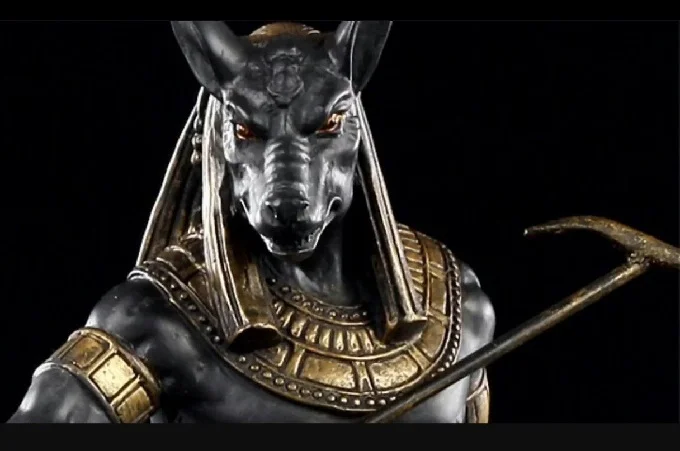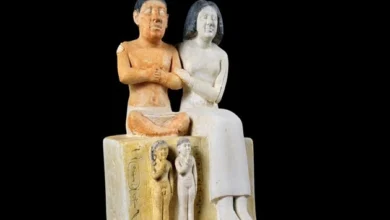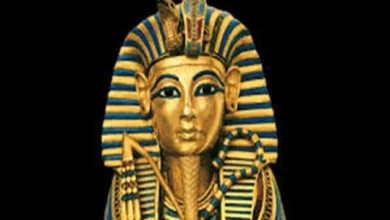Seth: most mysterious Egyptian god with head of an extraterrestrial animal

At first glance, the appearance of the ancient Egyptian gods seems rather simple and unsophisticated: they were anthropomorphic half-human half-animals. Horus with the head of a falcon, Sobek with the head of a crocodile, or Thoth with the head of an ibis – it seems that the ancient Egyptians found inspiration in the animals of the Nile to depict their gods. But scholars still can’t figure out which animal depicts the god Seth, also known as Set, Sutekh, or Setekh.
Seth was one of the most ancient gods of the ancient Egyptian pantheon and is believed to have been worshipped as early as the pre-dynastic period. The earliest depiction of Seth can be found on a carved ivory crest from the Amrathian period (4000 – 3500 BC).
According to ancient Egyptian mythology, Seth is known as the god of storm, disorder, the sands of the desert, violence, destruction, war, and general chaos. In antiquity, Seth was also called the Greek Tiphon, the Tiphonic Beast, or the Tiphonic Beast. There is a depiction of this Typhonic beast in the form of a real animal, but even then, it cannot be properly identified.
Seth’s head somewhat resembles that of a dog or jackal, but his ears are very long and upright, and his jaws are not only strongly elongated but curved, like the muzzle of an anteater. Interestingly, anteaters are found only in Central and South America, and they do not have such ears. No other native animal has a head like this, so it is not surprising that the debate over which animal’s head was the head of the god Seth has not subsided for hundreds of years.
Because of this, many historians believe that Seth had the head of a fictional animal that never existed in reality. However, this looks very strange against the background of the fact that other Egyptian gods have the heads of completely real animals. Some scholars have suggested that perhaps the animal that Seth portrayed is now extinct.
Some have speculated that Seth’s head is a stylized image of a jackal, a fox, or even a hyena, but again, in all the images of Seth that have come down to us, he has a strongly curved snout, whereas these animals have straight snouts. And if the Egyptians didn’t bend the muzzle of a crocodile or a cat for their other gods, why on earth would they do that specifically for Seth?
Also, Seth has a very remarkable tail, which is often depicted standing upright and with a tassel on the end, like a lion, or with a forked end. Moreover, the Egyptian god Anubis was depicted with the head of a jackal with a snout and ears that quite accurately replicate the head of a real jackal.
Therefore, when the Egyptians drew Seth with exactly this head, different from the jackal head of Anubis, they definitely did not just stylize the head of a jackal but depicted exactly what they wanted.
Some researchers have even suggested that Seth has a giraffe head, although in the colored frescoes Seth’s head is always very dark, often black or dark red altogether, but not yellowish-orange like a giraffe.
Many agree that Seth’s head is very similar to the greyhound breed of dog, which is very ancient, but the ears of the greyhound are quite different, and this breed is not at all suitable for the god of rage and war.
Other theories suggest that Seth has the head of a donkey, some unknown wild dog, a pig, or even an okapi (a relative of the giraffe). One of the most controversial theories has been put forth by ancient astronaut theorists, who believe that Seth is depicted in his true form as an alien, as all ancient Egyptian gods originally were before they became heroes of myths.
Is Seth an evil god?
Seth was originally considered a benevolent god who lived in the underworld and was responsible for helping the dead get to heaven, but he later came to be considered an evil god during a conflict with Horus.
The conflict between Seth and Horus is a well-known ancient Egyptian myth. According to the myth of the creation of the Great Ennead at Heliopolis, Seth was the son of Geb and Nut and the brother of Osiris, Isis, and Nephthys, who was also his wife.
Osiris became the ruler of Egypt, and Seth, jealous of his brother, plotted to kill him by stealth. Although Seth managed to kill Osiris, Isis (Osiris’ wife) managed to revive her husband through magic long enough to become pregnant with her son Horus. When Horus grew up, he took revenge on Seth, prevailed, and became the new ruler of Egypt.
Although, in many myths, Seth was considered a force of evil, this was not always the case. In some myths, the gods used Seth’s power and authority for good. The most famous of these is Seth’s role as protector of Ra’s solar boat.
Every night, as the sun boat made its journey through the underworld, Seth fought Apep, the serpent of chaos. Seth is often depicted standing on the prow of the solar boat and piercing Apep, the ancient Egyptian deity who embodied chaos (ı͗zft in Egyptian) and was the opponent of light and Maat (order/truth).




